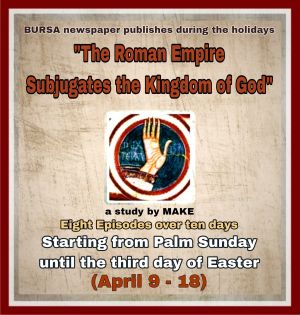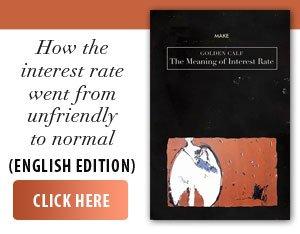To bring peace to the Middle East, the majority of the members of the UN General Assembly are in favor of a two-state solution - Israel and Palestine, an idea that was the main theme of the Franco-Saudi summit that was to take place tonight in New York at the UN headquarters, after the closing of the edition. Britain, Australia, Canada and Portugal recognized the State of Palestine, just on the eve of the UN General Assembly.
More than 150 countries around the world have so far done so, a move that Tel Aviv Prime Minister Benjamin Netanyahu said: "There will be no Palestinian state; such a state would endanger the very existence of Israel."
German Foreign Minister Johann Wadephul reiterated yesterday, before traveling to New York to attend the UN General Assembly, that his country is in favor of recognizing Palestine only at the end of a negotiated process for the creation of two states - that is, with the approval of Israel - but stressed that this process must begin now, without further delay.
In contrast, French President Emmanuel Macron declared that recognizing the state of Palestine "is the only way to offer a political solution to a situation that must end." In fact, he was to announce tonight, at the opening of the Franco-Saudi summit, that France recognizes the state of Palestine.
The gesture made by the majority of members of the UN General Assembly is also a symbolic one, since the recognition of Palestine as a state by most Western states took place on the very day that the Jewish new year began - Rosh Hashanah.
Among the states that were to sign the declaration of the Franco-Saudi summit recognizing the state of Palestine tonight is Belgium, whose Foreign Minister, Maxime Prevot, declared: "We clearly recognize the State of Palestine, the legitimacy of the Palestinian people to see such a state. We will make it administratively and legally official in a second phase, but that is why we are very proud to be among the nations that will take another official step towards recognition today."
The Brussels government said it would legally formalize the recognition of Palestine at a later date, after the terrorist group Hamas hands over the Israeli hostages and disappears from the political scene in the Middle East.
Representatives of the White House Administration labeled the recognition of a Palestinian state by several key US allies as symbolic. "Our goal remains serious diplomacy, not show-off. Our priorities are clear: the release of the hostages, the security of Israel, and the peace and prosperity of the entire region, which are only possible without Hamas," a State Department spokesman said, according to AFP.
• Palestine, a state without sovereignty
Palestine is, at the same time, a widely recognized political reality and an incomplete state construction, caught between international law, facts accomplished on the ground, and a history that has fixed, layer upon layer, irreconcilable perceptions.
The legal status of the territory called Palestine remains paradoxical: since 2012, the UN General Assembly granted it the status of "non-member observer state", over 150 countries recognize it as a state, and now with new recognitions - including from Great Britain - pushed the subject back onto the global agenda. But diplomatic recognition does not equate to full sovereignty: Palestine does not sovereignly control its borders, airspace, territorial sea, or the entire territory it claims, and internal governance is fragmented between the Palestinian Authority in the West Bank and the de facto Hamas administration in the Gaza Strip.
Under these circumstances, is Palestine a state formation?
Yes, in terms of political representation, institutions, and international recognition; no, in the classic sense of effective sovereignty over territory and legitimate monopoly of force.
The origin of this paradox is clear if we look back to 1947, when UN General Assembly Resolution 181 on the Partition Plan for Mandatory Palestine proposed the existence of two states and an international status for Jerusalem. It was a political recommendation, not an automatic "recognition” of any of the states, because the General Assembly does not create states by vote; Legitimacy becomes effective only when there is proclamation, control, relations and, finally, admission as a UN member. Israel proclaimed itself a state in 1948 and was admitted to the UN in 1949; the envisaged Palestinian Arab state did not emerge then, because Arab and Palestinian leaders rejected the plan as unfair and illegitimate. The motivation for the rejection was less fear of marginalization in the Jewish state and more a rejection of the "indivisible package”: accepting their state would have meant simultaneously accepting Jewish state on what the Arab-Palestinian majority considered its historical land. The plan allocated about 55% of the territory to the Jewish state, although Jews represented about a third of the population, and a significant part of the area was public land administered by the British mandate or sparsely populated areas.
This gave rise to a political rupture that was to be followed by an armed rupture: between December 1947 and May 1948, intercommunal violence escalated, then, immediately after the proclamation of the state of Israel on May 14, 1948, neighboring Arab states invaded, starting the 1948 Arab-Israeli War, called in Israel the "War of Independence".
• Most Palestinians do not approve of the existence of a Palestinian state alongside Israel
In fact, most Palestinians do not agree with the existence of a Palestinian state alongside the Israeli one.
Surveys conducted by PCPSR, a leading institute in the West Bank and Gaza, show that the majority of Palestinians want a state of their own, especially within the 1967 borders. According to the latest survey published in May 2025, when asked this direct question, 61% of respondents say they support the idea, with higher support in the West Bank - at 66%, and lower in Gaza - at 54%.
However, when the two-state option is explicitly formulated, i.e. a Palestinian state alongside Israel, the level of support drops to approximately 40%. If people have to choose between three options - two states, a confederation or a common state - the largest share, 47%, is oriented towards the two-state solution, but even in this case an absolute majority is not reached.
However, the desire does not overlap with the confidence in its realization: 64% of respondents believe that the two-state solution is no longer practically possible today, mainly due to the expansion of Israeli settlements. Here lies the explanation of the paradox: Palestinians want a state, but they do not believe that they can achieve it through the classic two-state scheme.
In recent trends, support for two states has remained around 40%, but distrust in its feasibility has increased noticeably after the Gaza war. The conclusion is clear: Palestinians want a state, especially within the 1967 borders, but support for the two-state formula remains below 50%, and the dominant feeling is that the current political path no longer offers any real chances of achieving it.
• Palestine, a territory consisting only of the West Bank and the Gaza Strip
After 1948, the distribution of property and the nature of control over land changed radically. During the British Mandate, most of the registered private land was Arab, while land purchased by Jewish organizations amounted to a small fraction of the total area. But over half of the area of Mandatory Palestine was not privately owned, but public land administered by the British-a technical category, not the "state land” of any local state.
After the proclamation of Israel, two processes accelerated the change: the transfer of public land under British administration to the new state, and the massive takeover of Palestinian property through the Absentee Property Act (1950), which allowed refugees or people displaced by war to be declared "absent” and their land to be transferred to the state. Estimates of the land taken under this law run into the thousands of square kilometers, representing about a quarter of the area of Israel today, and together with the transferred public lands and the acquisitions prior to 1948, created the framework in which approximately 93% of Israel's land is now owned or administered by the state or parastatal entities such as the Israel Lands Administration and the Jewish National Fund, most of which are leased on long-term leases. This also leads to a difficult but factual conclusion: the increase in public control from the initial proportion to the current level was not possible without the large-scale loss of Palestinian property following the war and subsequent legislation, which to this day fuels moral and political claims regarding the right of return, reparations, or compensation.
Understanding "what” Palestine is today also means delimiting the space in question. In historical parlance, "Palestine" referred to the territory of the British Mandate between the Mediterranean and the Jordan, i.e. today's Israel, the West Bank and the Gaza Strip. In current political parlance, the "state of Palestine" means the West Bank and the Gaza Strip, with East Jerusalem claimed as its capital, but with effectively divided control.
In the West Bank, the Oslo Accords (initialed in 1993 in Washington) created zones with different regimes: in Area A, the Palestinian Authority has civil and security powers; in Area B, there are Palestinian civil authorities and Israeli security; in Area C (approximately 60% of the territory) control is Israeli, and access to and use of Palestinian land is frequently restricted.
The Oslo Accords provide, first of all, for mutual recognition: the Palestine Liberation Organization (PLO) accepted Israel's right to exist in peace and security, and Israel recognized the PLO as the legitimate representative of the Palestinian people. Another key element of the agreement was the creation of the Palestinian National Authority, a provisional self-governing structure with limited powers over parts of the West Bank and the Gaza Strip, to which responsibility for areas such as education, health, taxes and tourism was to be gradually transferred. The most sensitive issues, such as the status of Jerusalem, the fate of Palestinian refugees, Israeli settlements, final borders and security issues, were postponed for further negotiations, which were to be concluded within a maximum of five years, negotiations that never took place.
In essence, the Oslo Accords laid the foundations for a two-state solution, but implementation remained incomplete, often blocked by violence and a lack of political will on both sides.
• Gaza, one of the most densely populated territories on the planet
The Gaza Strip, following the unilateral Israeli withdrawal in 2005, has been governed by Hamas since 2007, in a de facto regime separate from Ramallah, meaning that international recognition of the "state of Palestine" does not equate to a unified administrative authority on the ground. In terms of property, Gaza is predominantly privately owned by Palestinians or locally administered, while the West Bank presents a fragmented picture, with significant private Palestinian property but large portions of Area C under Israeli control and with settlements, infrastructure and access regimes that limit the effective exercise of property rights.
Demographically, the picture is equally dire: some 3.2 million Palestinians live in the West Bank and some 2.3 million in the Gaza Strip, which means a total of some 5.5 million people in the territory claimed for the Palestinian state, with Gaza among the most densely populated territories on the planet, i.e. 5000 people per square kilometer.
From this anatomy of the facts also flows the meaning of recent diplomatic recognitions. When a state states that it recognizes the "state of Palestine” in 2025, it recognizes a state entity in the sense of public international law, represented externally by the Palestine Liberation Organization and, in practice, by the institutions of the Palestinian Authority, on the territory of the West Bank and the Gaza Strip, with final borders to be drawn through negotiations. It does not recognize effective control over the entire space, nor full sovereignty over borders or airspace, but it validates the existence of the subject of international law and supports the two-state solution.
And then, which territories are included in the recognized state? The West Bank and the Gaza Strip, within the negotiated parameters of the two-state solution, with the status of East Jerusalem claimed by the Palestinian side, but without recognition deciding, by itself, the final lines on the map.
What makes the Palestinian state so difficult to fit into a dry definition is precisely the coexistence of two opposing realities: a legal and diplomatic one, in which there is international recognition, institutions, representation, a flag, treaties and a place, albeit limited, in the global order; and a political and territorial one, in which effective control remains fragmented, and the conditions of classical sovereignty - defined territory, unitary government, monopoly of force, control of borders - are still unfulfilled. In this space between legitimacy and effectiveness, the future of Palestine is at stake.
Without reconciling external representativeness with internal governance, without clarifying territorial status, and without a lasting solution to the issues of property, refugees, and security, Palestinian statehood will always remain "near”: present enough to be recognized, too incomplete to be fully sovereign. And that is precisely why each new diplomatic recognition counts not as a verdict on the past, but as a political investment in the chance that, at the end of negotiations, Palestine will move from the register of promise to that of effective sovereignty, where the flag and the border are no longer just symbols, but realities governed by law.
















































